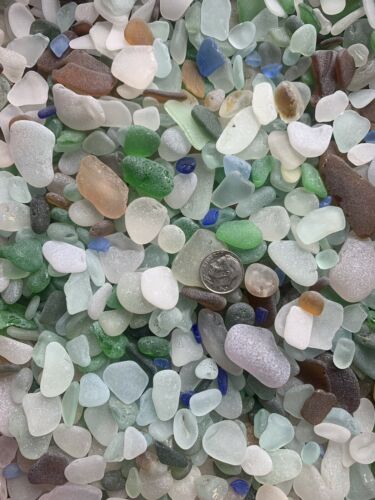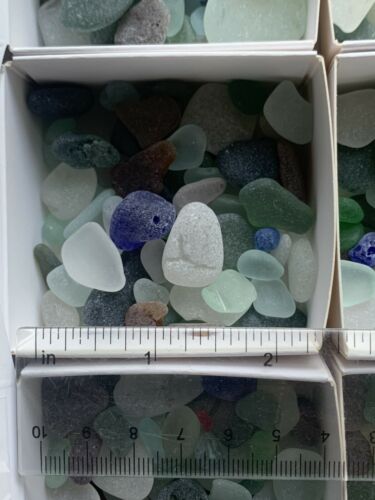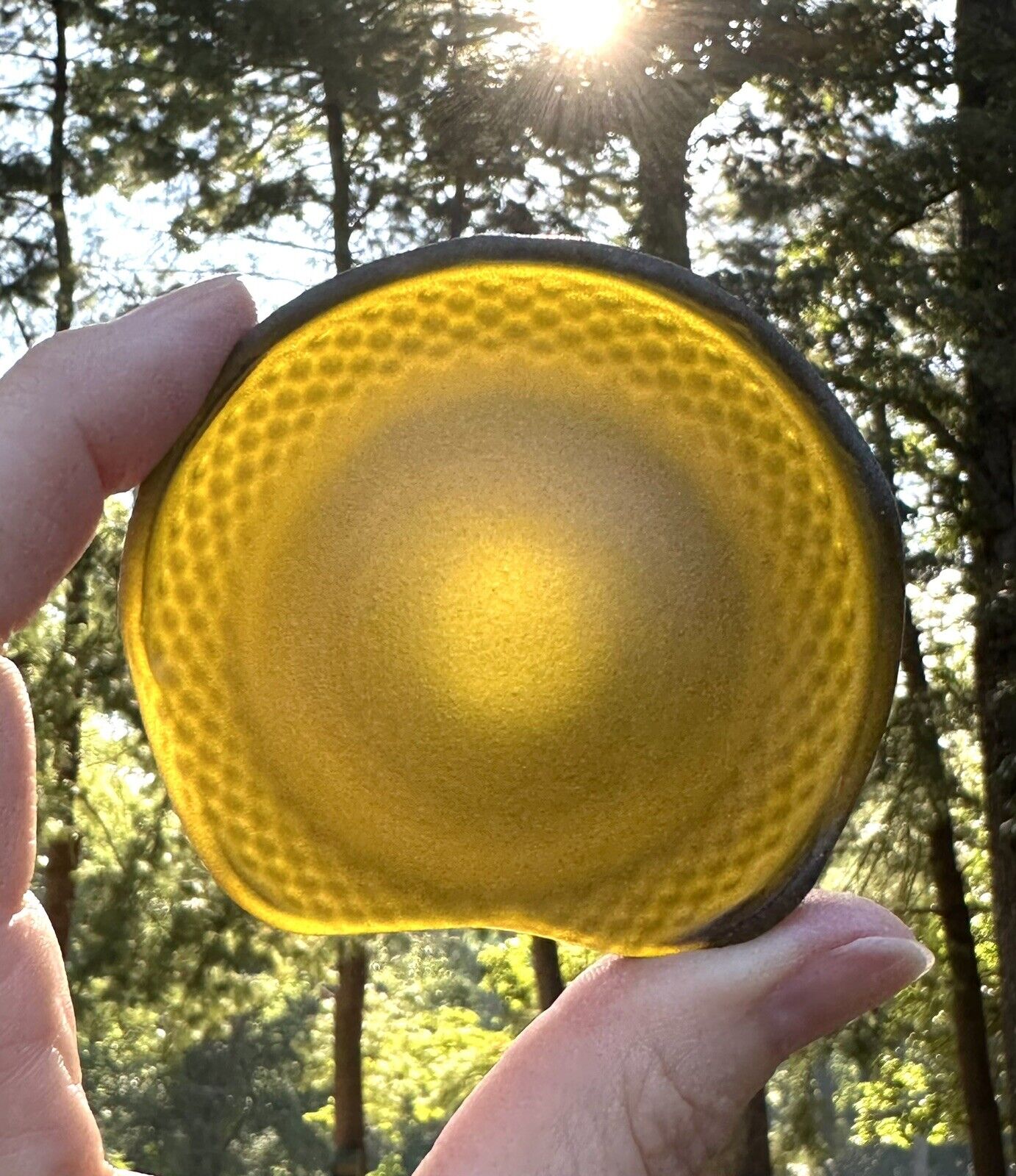-40%
75pcs Mixed Colors Genuine Surf Tumbled Beach Sea Glass Jewelry/Crafts
$ 5.27
- Description
- Size Guide
Description
You will be getting 75 pieces of genuine, surf-tumbled sea glass. Sizes will range from extra small to medium , and each lot will have a variety of shapes as well as a mix of craft and jewelry quality pieces.Each lot will have a Variety of colors, which may include some rarer colors.
The Sample photos show some of the pre-packaged lots of 75 pieces of sea glass. Each Lot will be chosen at random.
Please look at the pictures carefully as they are the best description. The coin and/or ruler are used for size reference.
If you have any questions or want additional photos please message me. I will be happy to combine shipping on multiple orders.
100% genuine sea glass
Knowing the Difference between Genuine Sea Glass and Cultured Sea Glass:
While I’m aware that many people who use sea glass to create art might not care whether or not the sea glass they are buying is genuinely, surf-tumbled (authentic), or machine tumbled (cultured), I’m also aware that many people truly do not know the difference between the two.
Unfortunately, approximately 85% of those selling “authentic” sea glass on eBay, and 90% of those selling on Etsy, are actually selling cultured glass. This is an issue that affects those of us who sell genuine sea glass, as it’s hard to compete with those who sell large quantities of rare colors at low prices. While I sell both genuine sea glass and cultured sea glass, I make sure to put “cultured” or “genuine” in both the title & description so that my customers know what they are getting.
Unfortunately, there is little that can be done about those who falsely claim their cultured glass is genuine. However, I can help to educate those who are looking for genuine glass, but aren’t able to tell the difference. If ever in doubt, consider the following:
(1)
99% of Genuine sea glass, when held to the light, will bear tiny “c” marks.
These marks are unique to genuine glass, and can look like half “c’s”, full “c’s” or crooked “c’s”. They are deep-rooted pit marks that come from years of being in the water. You can see an example of these “c” marks in the “Know the Difference” photo (last photo).
(2)
How does it feel?
If you’ve already purchased glass from someone, but question it’s authenticity, run your fingers over the surface. Genuine sea glass feels much rougher to the touch, while cultured glass has a smooth texture. The frosted surface with both the microscopic divots and visible divots on an authentic piece, will run much deeper than what you’d find on cultured glass, making a noticeable difference in texture. Not all authentic glass will have a frosty appearance, but they’ll still contain the “c” marks mentioned above.
(3)
Where was it found?
Just because a person lives on the coast, it doesn’t mean they have access to sea glass. In the U.S., you’re more likely to find sea glass on the west coast as well as north-east coast (or the Great Lakes area). Hawaii and Puerto Rico are also well known for their sea glass. However, the further south you go along the east coast, the less sea glass you’ll find. I lived in Florida for a decade and have visited several times a year since. In the past twenty years, I’ve never found more than a few pieces of sea glass, despite searching dozens of beaches on both the east and west coast. Florida is one coastal state where you’ll find little to no sea glass. So if a seller claims their large quantities of rare colored glass was found in Florida, there’s a 100% chance it’s fake. So if you’re from Florida and have been wondering why some people are finding buckets full of sea glass, while you can’t find any....now you know why.
(4)
Pay attention to all the photos
in a seller’s different listings. If the sea glass in the different photos look like they can be pieced together like a puzzle, it’s because all of the pieces came from the same glass item. While it’s not uncommon to find several pieces of the same color together, chances of finding all of the pieces of a broken vase, plate or glass, perfectly tumbled by the ocean, is nearly impossible.
(5)
Shape
. After years and years of being tumbled by the ocean, a river, or lake, the pointed edges of any broken glass pieces are rounded out. Finding genuine, triangular pieces does happen, but chances of finding pieces of that shape, larger than .5”, is extremely rare. Any piece of glass that’s been in the water long enough to become smooth and frosted, will have been broken or worn down to 1/2 it’s original size. The older the glass, the more rounded it becomes. Antique glass was made to be thick and sturdy, while modern glass is much, much thinner. So large, thin, cobalt blue triangles, for example, could only have come from a modern bottle/plate. Remember, it takes decades for a piece of glass to become sea glass, especially in calmer, coastal waters.
(6)
Color
: Yellows, reds, pinks and oranges are colors that you won’t find every day, gray being one of the rarer colors. Cobalt, turquoise, denim, gray, cornflower and teal are also rarer colors. Purple/lavender is a very unique color in the way that it starts out as clear glass. In the 1800s and 1900s, glassmakers used manganese to clarify the glass. Over time, exposure to sunlight can turn the manganese a lavender or amethyst color. Other purples, such as grape or violet, come from bitters bottles, decorative glassware, flasks or decanters. Black glass, otherwise known as pirate glass, is also very rare. It’s very, very old, and when put against a light, can actually be any color, from red and purple, to denim or olive.
So pay attention to the amount of rare colors someone is selling. Because of the high demand for sea glass, and the decades it takes to create sea glass, finding it is becoming harder and harder, especially on beaches well known for their sea glass.
(I hope this has been helpful to some of you!)
I’ve met many wonderful, honest, sea glass sellers here on eBay, and those of us who sell authentic and/or cultured glass (titled/described accurately), know that we are fighting a losing battle. Popular sellers, who claim their tumbled glass is authentic, often dispute any feedback claiming their product is counterfeit, having all negative reviews removed. This makes it hard for people who base someone’s claims of authenticity on the feedback left by others. If you are ever unsure about a seller’s sea glass, or are looking for more sellers whose glass is authentic, I’d be happy to provide you with a list of eBay sellers who I’ve gotten to know, and whose genuine sea glass is actually authentic, or their cultured glass painstakingly cut, tumbled and listed for artistic purposes. -Sincerely, Beth



















